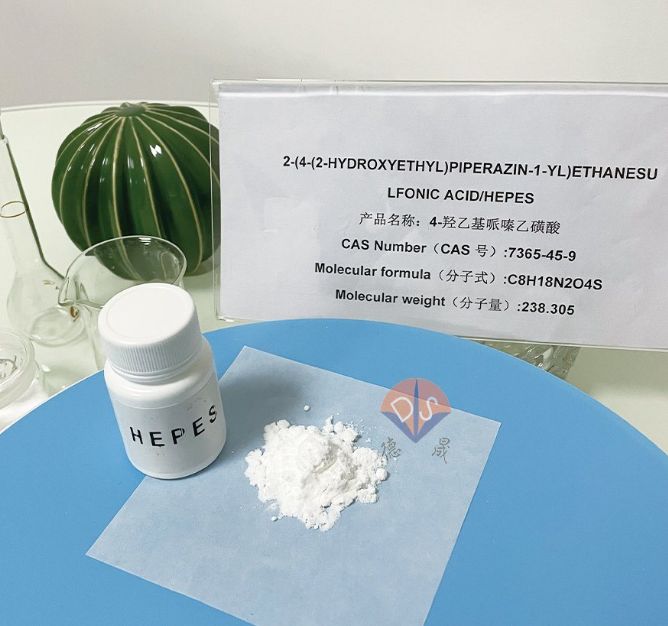Application Analysis of HEPES: Key Components in Cryopreservation
Release time:
2025-11-09
In cell cryopreservation technology, maintaining the structural and functional integrity of cells in a low-temperature environment is the core goal. This process involves complex physical and chemical changes, in which the stability of the solution environment directly affects the C activity rate and recovery quality of cells. HEPES buffer(4-hydroxyethylpiperazine ethanesulfonic acid) plays an important role as a commonly used biological buffer in cryopreservation systems.

HEPES buffer
The necessity of maintaining pH stability
During the cooling process, the ionic strength and solubility of the solution change, which may cause a pH shift. Cells are more sensitive to pH changes, and acid-base environments beyond the physiological range can affect membrane permeability, enzyme activity, and protein structure. The effective buffering range of HEPES is between pH 6.8-8.2, which is close to the physiological pH value of most mammalian cells. Compared with other buffering agents, HEPES has a smaller pKa change at low temperatures, making it more effective in maintaining the acid-base balance of the solution during freezing and reducing cell damage caused by pH fluctuations.
Auxiliary role in the freezing process
Although HEPES does not have the ability to directly inhibit ice crystal formation, it plays a role in stabilizing the solution system in composite cryopreservation solutions. When used in combination with osmotic cryoprotectants such as DMSO or glycerol, HEPES helps maintain ion balance and alleviate osmotic pressure changes caused by water migration in cells during the early stages of freezing. This stable environment helps to reduce the drastic fluctuations in cell volume, thereby reducing the risk of cell membrane damage.
Support cell recovery
During the thawing phase, cells are re exposed to a normal temperature environment, and rapid changes in the internal and external environment may trigger a stress response. Due to the relatively stable pH conditions maintained by HEPES during freezing, the chemical environmental impact on cells during recovery is relatively small. In addition, HEPES does not participate in cellular metabolism and does not cause toxicity to cells at conventional concentrations, thus facilitating the rapid recovery of cells to their normal physiological state.
Composition of cell cryopreservation solution
Modern cell cryopreservation solutions typically consist of multiple components, including basal culture medium, cryoprotectants, protein supplements, and buffer systems. HEPES is often used as an additional buffering component to enhance the pH stability of solutions during room temperature operation and freezing processes. In a cryopreservation system without serum or chemical composition determination, the application of HEPES helps to reduce batch differences and improve the consistency of cryopreservation effects.

Product packaging
Hubei Xindesheng: A professional manufacturer of biological buffering agents
In the production field of biological buffering agents, product purity and batch stability are key factors in ensuring experimental reproducibility. Hubei Xindesheng focuses on the research and production of biological buffering agents, with a product line including various commonly used buffering agents such as HEPES, Tris, MOPS, etc. The company adopts standardized production processes to ensure that product quality meets the requirements of scientific research and industrial applications. Its products are widely used in cell culture, diagnostic reagents, and other fields. Choosing Desheng means choosing buffer supply support with professional background and technical strength.
Previous page
Previous page
Contact details
Contact number
Address: C8, Guanggu United Science and Technology City, Ezhou City, Hubei Province
Fax:0711-3704 589
Follow us



